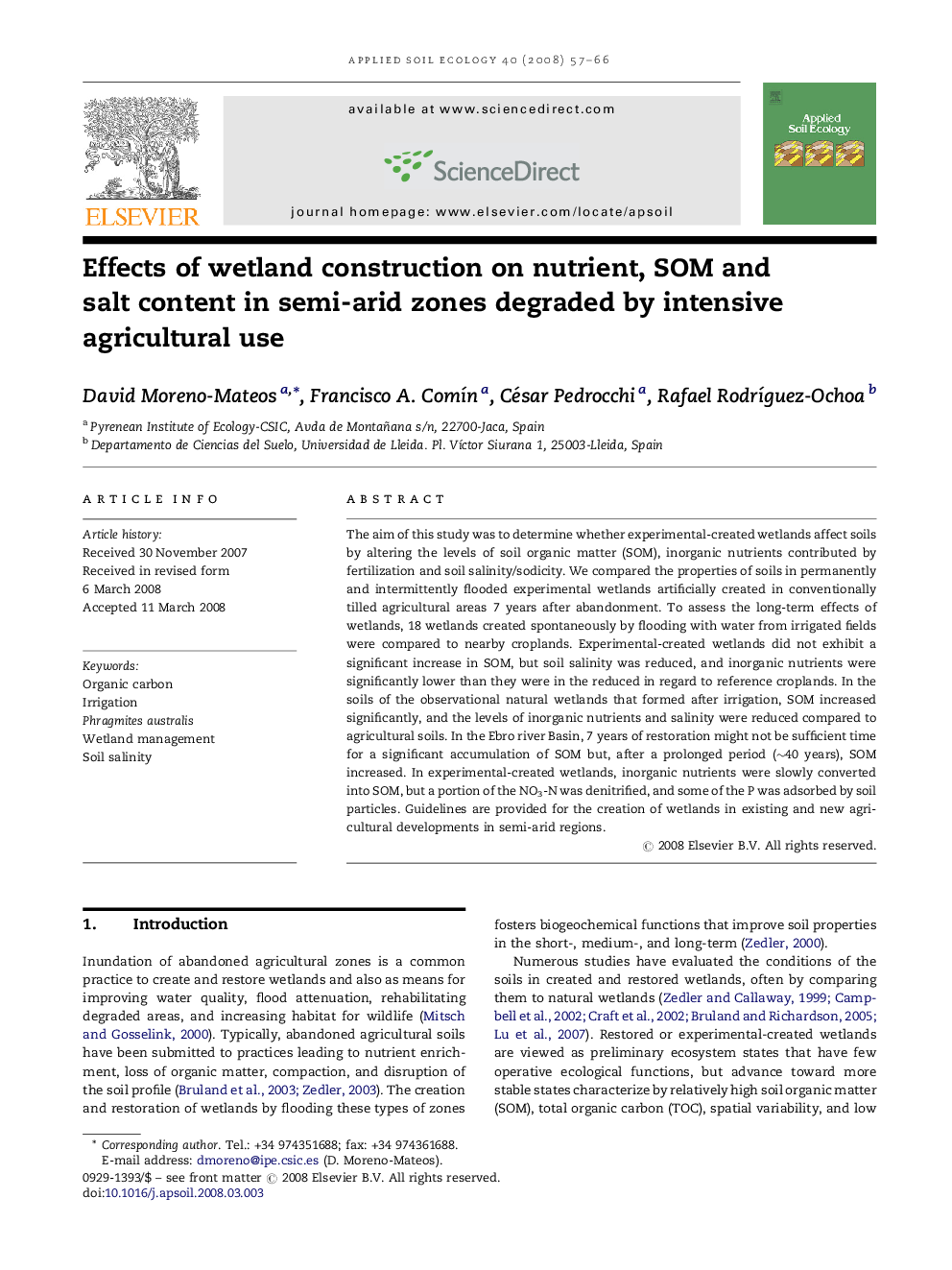| Article ID | Journal | Published Year | Pages | File Type |
|---|---|---|---|---|
| 4383153 | Applied Soil Ecology | 2008 | 10 Pages |
The aim of this study was to determine whether experimental-created wetlands affect soils by altering the levels of soil organic matter (SOM), inorganic nutrients contributed by fertilization and soil salinity/sodicity. We compared the properties of soils in permanently and intermittently flooded experimental wetlands artificially created in conventionally tilled agricultural areas 7 years after abandonment. To assess the long-term effects of wetlands, 18 wetlands created spontaneously by flooding with water from irrigated fields were compared to nearby croplands. Experimental-created wetlands did not exhibit a significant increase in SOM, but soil salinity was reduced, and inorganic nutrients were significantly lower than they were in the reduced in regard to reference croplands. In the soils of the observational natural wetlands that formed after irrigation, SOM increased significantly, and the levels of inorganic nutrients and salinity were reduced compared to agricultural soils. In the Ebro river Basin, 7 years of restoration might not be sufficient time for a significant accumulation of SOM but, after a prolonged period (∼40 years), SOM increased. In experimental-created wetlands, inorganic nutrients were slowly converted into SOM, but a portion of the NO3-N was denitrified, and some of the P was adsorbed by soil particles. Guidelines are provided for the creation of wetlands in existing and new agricultural developments in semi-arid regions.
